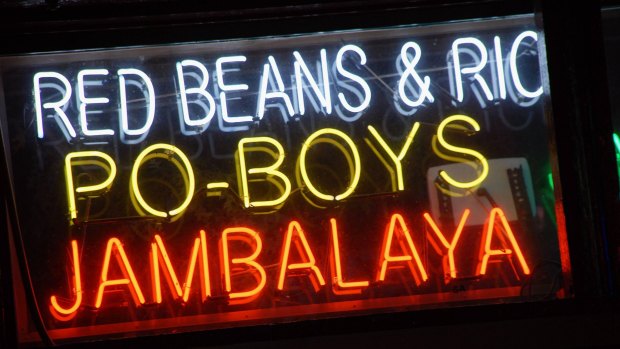This was published 7 years ago
Lafayette, Louisiana: What authentic Cajun food is really like
By Jamie Lafferty
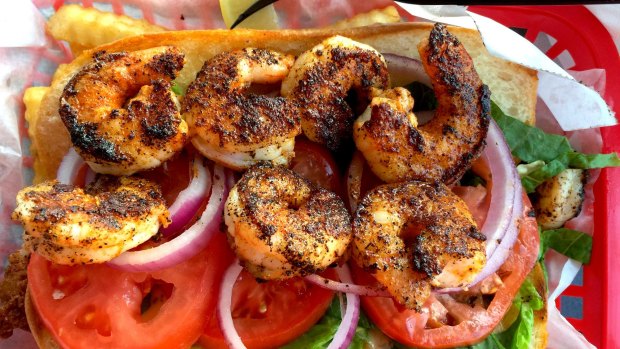
A fully-loaded Shrimp Po Boy sandwich. Credit: iStock
You know Cajun food, right? Cajun chicken – that ubiquitous, vaguely spicy pub-grub offering. Goes well with chips. Seems authentic, not to mention flexible enough to be exported to all corners of the Earth.
"I've tried that stuff just for the sake of trying it and it's normally pretty gross," says Marie Ducote with a wave of her hand. I'm talking to the founder of Cajun Food Tours aboard her bus in Lafayette, Louisiana. She is understandably irked by her region's inaccurate reputation. "There might be a little heat on some of our stuff but it gives Cajun food a bad name – people think it's going to be so hot, but it's not."
Lafayette sits in the centre of Acadiana, the official name of French Louisiana, home of the Cajuns and their distinctive food. Marie has made it her job is to educate visitors on the history of the region and its food during tours in a bus she bought and converted specifically for the purpose.

Lake Martin, Lafayette, Louisiana.Credit: Alamy
Because of the exportation of bad food masquerading as Cajun, she often has to calm guests' fears about how hot the food will be before they arrive. "Nothing we eat is so spicy that you have to sit there with a gallon of milk, but that's what people expect," she says. During peak season she leads two tours a day, darting around six Lafayette restaurants in just three hours, leaving the participants better informed, happier and considerably fatter than they were before getting on. Chicken is rarely on the menu at all.
In total, she works with 26 restaurants, to find a blend of dishes that people might have heard of (gumbo, jambalaya) and several which are equally important but less famous. Perhaps the best example of this is boudin, a precooked sausage popular throughout the region, made to individual recipes, some spicier than others, some using seafood, some using pork. As ravioli is in Italy or pasties are in Britain, so boudin is in Cajun country: a broadly agreed upon but ultimately customisable dish.
As the vowel-heavy, nasal sound suggests, its origin, like the Cajun people themselves, is French. At a time when the plight of refugees generates global headlines, the Cajun story seems as relevant today as it did during the Le Grand Dérangement of 1755 – the Great Upheaval, when French Acadians were forcibly deported from Canada by the conquering British Empire.
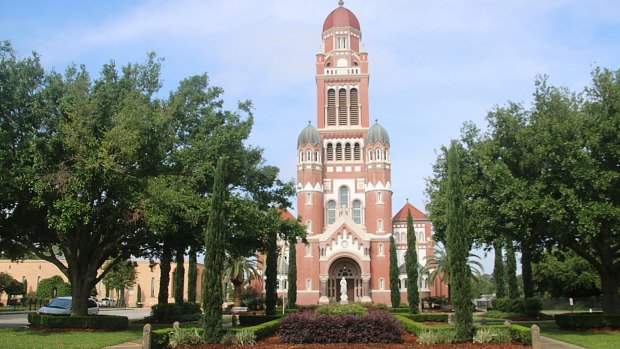
St-John's Cathedral, originally named l'glise St-Jean de Vermilion, was the first church in the Lafayette parish, Louisiana. Credit: iStock
Fleeing south, these persecuted Catholics scattered through nascent America, many having to continue all the way to French colonies in the Caribbean, before seemingly useless, swampy land was made available to them in what is now Louisiana. Along the way, the mangling of "Acadian" led to "a Cajun", and so their fate was altered once more.
Today, descendants of families who settled this region trace their heritage all the way back to those unhappy days in Canada. Their language may be based on old French, but it has evolved down a different path from the mother tongue. The same can be said of their food. As refugees, the Cajuns had to make the most of their new surroundings. When they began to eat crawfish, today regarded as a delicacy, it was not as a nod to some ancient Parisian dish, but rather because they were regarded as disgusting swamp insects by other communities.
Again and again, necessity rather than choice drove a lot of what is now regarded as traditional Cajun food. Consider the po' boy sandwich: during the Great Depression of the 1930s, enough beggars pleaded for those more fortunate to "help a poor boy", and enough day-old baguettes stuffed with leftovers were handed out, that the po' boy became a dish of its own. The best in Lafayette are served at the Olde Tyme Grocery – it's there Marie delivers this potted history while her guests stuff their faces with the hearty sandwiches.
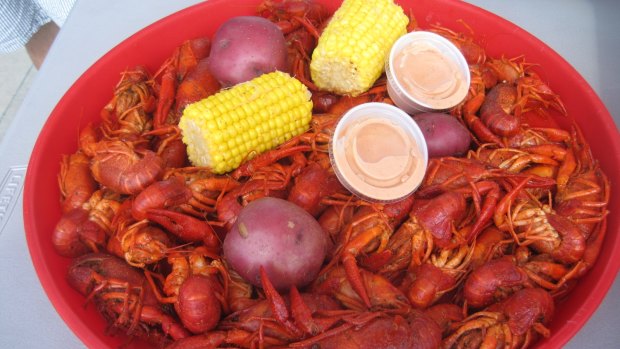
Cajun Food at its finest.Credit: Jamie Lafferty
For residents, these sorts of dishes are part of everyday life and, while people around the world are starting to actively seek out authentic Cajun food, at home, locals are only now starting to realise what they have. Just don't accuse them of overseasoning their food.
"When we say something is spicy, we mean full of spices and flavour," says Marie. "We have such great ingredients – some really amazing seafood – why would we waste that and cover it in cayenne pepper?"
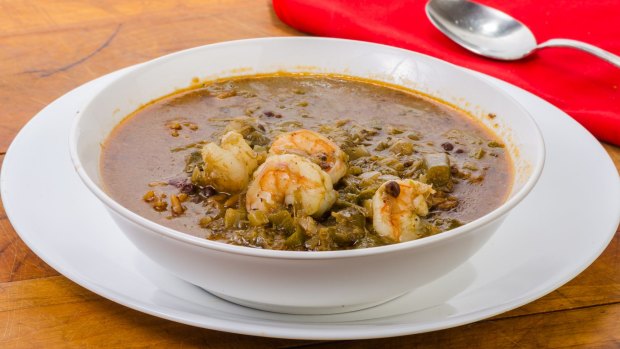
One dish Cajun meal of spicy shrimp gumbo with red beans and rice.Credit: iStock
TOUR
For a thorough crash course in Cajun food, culture and history, contact the chatty Marie Ducote. Travelling around Lafayette in a converted mini-bus, no other company offers a similar experience in the Cajun capital. Prices from $US55 per adult.
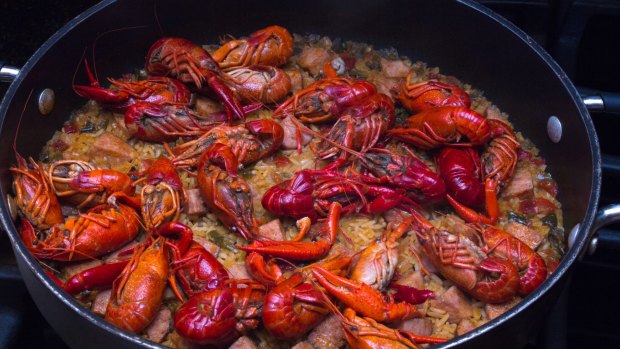
A skillet full of New Orleans style crawfish jambalaya. Credit: iStock
FLY
Qantas fly direct from Sydney to Dallas. From there, connect to Lafayette on a 90-minute flight with American. See qantas.com.au
Jamie Lafferty travelled as a guest of Lafayette Travel.
Sign up for the Traveller Deals newsletter
Get exclusive travel deals delivered straight to your inbox. Sign up now.
